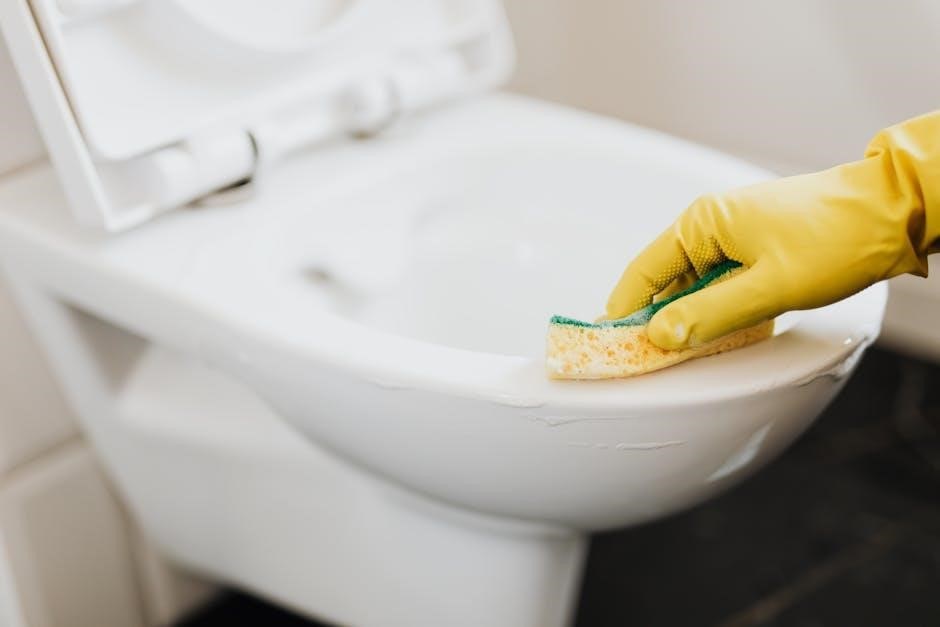This article will explore the multifaceted world of Handi Wipes, from their basic definition and various types to their safe and effective usage․ We will delve into reusable options, their benefits, and proper cleaning methods․ Disinfecting wipes will also be examined, highlighting Lysol and their many applications․
In today’s fast-paced environment, maintaining cleanliness and hygiene is paramount․ Handi Wipes have emerged as a convenient and versatile solution for tackling various cleaning tasks․ These pre-moistened cloths offer a quick and efficient way to wipe surfaces, remove dirt, and even disinfect, making them a staple in households, businesses, and healthcare facilities alike․
This article aims to provide a comprehensive overview of Handi Wipes, exploring their different types, uses, and safety considerations․ From reusable cloths designed for everyday cleaning to disinfecting wipes formulated to kill germs, we will delve into the diverse range of options available and their respective benefits․ We’ll examine how Handi Wipes compare to traditional cleaning methods like paper towels, rags, and sponges, evaluating their cost-effectiveness and environmental impact․
Furthermore, we will discuss the importance of Safety Data Sheets (SDS) for understanding the chemical composition and potential hazards associated with certain types of Handi Wipes, particularly disinfecting varieties․ By exploring these aspects, this article seeks to empower readers with the knowledge to make informed decisions when selecting and using Handi Wipes for their specific needs․
What are Handi Wipes?
Handi Wipes are pre-moistened towelettes designed for cleaning and wiping surfaces․ They represent a convenient alternative to traditional cleaning methods involving paper towels, sponges, and cleaning solutions․ Typically, these wipes consist of a non-woven fabric material saturated with a cleaning agent, which may include detergents, disinfectants, or other specialized formulas․
The primary function of Handi Wipes is to provide a quick and easy way to remove dirt, grime, and spills from various surfaces․ They are available in a range of sizes and thicknesses, catering to different cleaning needs․ Some Handi Wipes are designed for general-purpose cleaning, while others are specifically formulated for disinfecting, sanitizing, or even polishing․
The convenience of Handi Wipes lies in their portability and ease of use․ They eliminate the need for separate cleaning solutions and cloths, making them ideal for on-the-go cleaning tasks and situations where time is of the essence․ Furthermore, Handi Wipes offer a hygienic solution, as they are typically disposable, reducing the risk of cross-contamination associated with reusable cloths․ However, reusable options are also available, offering a more sustainable approach to cleaning․

Types of Handi Wipes
The market offers a diverse array of Handi Wipes, each tailored for specific cleaning tasks and environments․ General-purpose cleaning wipes are designed for everyday messes on various surfaces like countertops, tables, and appliances․ These wipes typically contain mild detergents that effectively lift dirt and grime without harsh chemicals․
Disinfecting wipes, such as Lysol wipes, are formulated with antimicrobial agents to kill bacteria and viruses on hard, non-porous surfaces․ These are commonly used in kitchens, bathrooms, and other areas where hygiene is paramount․ Reusable Handi Wipes, made from durable fabrics like cotton or microfiber, offer an eco-friendly alternative to disposable wipes․ They can be washed and reused multiple times, reducing waste and saving money․
Specialized wipes cater to niche cleaning needs․ For instance, stainless steel wipes are designed to clean and polish stainless steel appliances, leaving a streak-free shine․ Automotive wipes are formulated to clean car interiors, removing dirt and stains from dashboards, seats, and other surfaces․ The choice of Handi Wipe depends on the specific cleaning task and desired outcome, with options available for nearly every surface and situation․

Reusable Handi Wipes
Reusable Handi Wipes offer a sustainable cleaning solution, combining convenience with environmental consciousness․ Crafted from durable, washable materials, they replace disposable options, reducing waste․ They are ideal for various cleaning tasks around the home and are a cost-effective choice․
Benefits of Reusable Handi Wipes
Reusable Handi Wipes present a compelling alternative to disposable options, offering a multitude of benefits for both the user and the environment․ Firstly, they significantly reduce waste․ Unlike single-use wipes that contribute to landfill burden, reusable wipes can be washed and reused numerous times, minimizing environmental impact․ Many sources claim they last 20 times longer․
Economically, they prove to be a savvy choice․ While the initial investment might be slightly higher, the long-term cost savings are substantial․ By eliminating the need to constantly repurchase disposable wipes, consumers can save money over time․ A pack of reusable cloths can replace many rolls of paper towels․
Durability is another key advantage․ Reusable Handi Wipes are typically made from robust materials designed to withstand repeated use and washing․ This ensures they can handle tough cleaning tasks without tearing or falling apart․ They are often machine washable for easy cleaning․
Finally, Reusable Handi Wipes contribute to environmental responsibility by reducing reliance on paper products and minimizing waste; Choosing reusable options is a step towards a more sustainable lifestyle․ They often offer comparable absorbency to paper towels, making the switch seamless․
How to Use and Clean Reusable Handi Wipes
Using reusable Handi Wipes is straightforward, mirroring the application of disposable wipes or paper towels․ Simply use them for wiping surfaces, cleaning spills, or any other task where you’d typically reach for a disposable cloth․ Their durability makes them suitable for a variety of cleaning jobs throughout your home or business․
Cleaning reusable Handi Wipes is essential to maintain hygiene and prolong their lifespan․ The most common method is machine washing․ After use, simply toss the wipes into your washing machine with your regular laundry․ Using a mild detergent is recommended to avoid damaging the fibers;
For heavily soiled wipes, consider pre-soaking them in a solution of water and detergent before machine washing․ This helps to loosen stubborn dirt and stains․ Avoid using bleach or harsh chemicals, as these can degrade the material and reduce the wipes’ effectiveness․
Once washed, reusable Handi Wipes can be dried in a machine dryer on a low heat setting or air-dried․ Ensure they are completely dry before storing them to prevent mildew growth․ With proper use and cleaning, reusable Handi Wipes can provide a sustainable and cost-effective cleaning solution․

Disinfecting Handi Wipes
Disinfecting Handi Wipes are pre-moistened cloths designed to clean and kill germs on hard, non-porous surfaces․ They offer a convenient way to maintain hygiene and prevent the spread of bacteria and viruses in various settings, like homes and offices․
Lysol Disinfecting Wipes
Lysol Disinfecting Wipes are a popular choice for quick and effective cleaning and disinfection․ These wipes are designed to kill 99․9% of bacteria and viruses on hard, non-porous surfaces when used as directed․ They are pre-moistened with a disinfecting solution, making them convenient for use in homes, offices, schools, and other environments where hygiene is a priority․
These wipes are strong enough to tackle tough messes, grease, and grime while simultaneously disinfecting the surface․ They can be used on a variety of surfaces, including countertops, doorknobs, light switches, and bathroom fixtures․ Lysol Disinfecting Wipes are available in various scents, such as lemon and lime blossom, to leave behind a pleasant fragrance after cleaning․
The wipes come in convenient packaging, such as canisters and handi-packs, making them easy to store and transport․ They are a valuable tool in preventing the spread of germs and maintaining a clean and healthy environment․ Be sure to follow the directions on the label for proper use, including allowing the surface to remain wet for the specified contact time to ensure effective disinfection․
Uses for Disinfecting Handi Wipes
Disinfecting Handi Wipes are incredibly versatile and can be used in numerous settings to maintain cleanliness and hygiene․ In the kitchen, they are perfect for wiping down countertops after food preparation, cleaning spills, and disinfecting high-touch areas like refrigerator handles and microwave keypads․ Bathrooms benefit greatly from these wipes, effectively cleaning and disinfecting toilet seats, sinks, faucets, and shower surfaces․
Around the house, disinfecting wipes are ideal for sanitizing doorknobs, light switches, remote controls, and keyboards – all common breeding grounds for germs․ They are also useful for cleaning up messes made by pets and disinfecting pet toys and feeding areas․ In offices and schools, these wipes can be used to clean desks, shared equipment, and common areas to reduce the spread of illness․
Furthermore, disinfecting wipes are convenient for on-the-go use․ Keep a pack in your car for cleaning spills or sanitizing your hands after pumping gas․ They are also great for travel, allowing you to disinfect surfaces in hotel rooms or public transportation․ When using disinfecting wipes, always ensure the surface remains wet for the contact time specified on the product label to achieve optimal disinfection․

Safety Data Sheets (SDS)
Safety Data Sheets (SDS) are essential documents providing comprehensive information about chemical products․ They outline potential hazards, safe handling procedures, and emergency measures․ Understanding SDS is crucial for the safe use and storage of Handi Wipes, especially disinfecting varieties․
Importance of SDS for Handi Wipes
Understanding the importance of Safety Data Sheets (SDS) for Handi Wipes is crucial for ensuring user safety and preventing potential hazards․ SDS documents provide detailed information about the composition, properties, and potential risks associated with specific Handi Wipe products, particularly those containing disinfecting agents or chemicals․
For disinfecting Handi Wipes, the SDS will outline the active ingredients, such as quaternary ammonium compounds or alcohol, and their potential health effects, including skin irritation, eye damage, or respiratory issues․ The SDS also specifies appropriate personal protective equipment (PPE), such as gloves or eye protection, to minimize exposure during use․
Furthermore, the SDS contains critical information on handling and storage procedures, including temperature requirements, incompatibility with other substances, and proper disposal methods․ This information is vital for preventing accidental spills, fires, or environmental contamination․
In emergency situations, the SDS provides guidance on first aid measures, firefighting techniques, and spill cleanup procedures․ Having quick access to this information can significantly reduce the severity of incidents and protect individuals and the environment from harm․ Always consult the SDS before using any Handi Wipe product to ensure safe and responsible handling․
Where to Find SDS for Handi Wipes
Locating the Safety Data Sheet (SDS) for Handi Wipes is a straightforward process, ensuring that users have access to vital safety information․ The primary source for obtaining an SDS is typically the manufacturer’s website․ Most reputable manufacturers will have a dedicated section for SDS documents, often searchable by product name or item number․
Retailers who sell Handi Wipes, especially those with online platforms, may also provide links to the SDS on the product page․ This offers convenient access to safety information directly at the point of purchase․ For bulk purchases, it’s advisable to request the SDS from the supplier or distributor․
Another valuable resource is online SDS databases․ These databases compile SDS documents from various manufacturers, allowing users to search for specific products․ However, it’s essential to verify the accuracy and currency of the SDS obtained from these sources, as they may not always be up-to-date․
When searching for an SDS, be as specific as possible with the product name and manufacturer to ensure you obtain the correct document․ If you are unable to find the SDS through these channels, contacting the manufacturer directly is recommended․ They are legally obligated to provide the SDS upon request․
Handi Wipes, in their various forms, represent a versatile and convenient solution for cleaning and disinfecting needs in both household and commercial settings․ From reusable cloths that champion environmental responsibility to disinfecting wipes that combat germs, these products offer a practical approach to maintaining cleanliness․
The choice between reusable and disposable Handi Wipes hinges on individual priorities and intended use․ Reusable options provide an economical and eco-conscious alternative to paper towels, while disinfecting wipes offer peace of mind by eliminating harmful bacteria and viruses․ It’s crucial to select the appropriate type of Handi Wipe for the task at hand, whether it’s wiping down kitchen counters or sanitizing frequently touched surfaces․
Regardless of the type of Handi Wipe chosen, it’s paramount to prioritize safety․ Consulting the Safety Data Sheet (SDS) provides essential information on proper handling, storage, and disposal, minimizing potential risks․ By adhering to safety guidelines and making informed choices, users can leverage the benefits of Handi Wipes while safeguarding their health and the environment․
Ultimately, Handi Wipes are a valuable tool in the pursuit of cleanliness, offering convenience, versatility, and, when used responsibly, a sustainable approach to hygiene․
